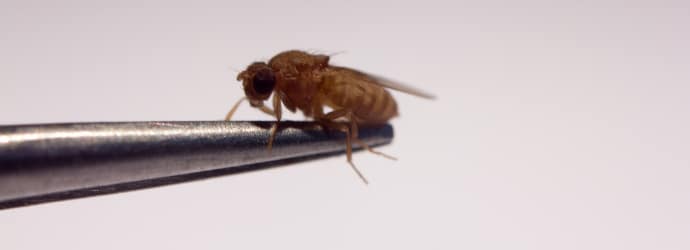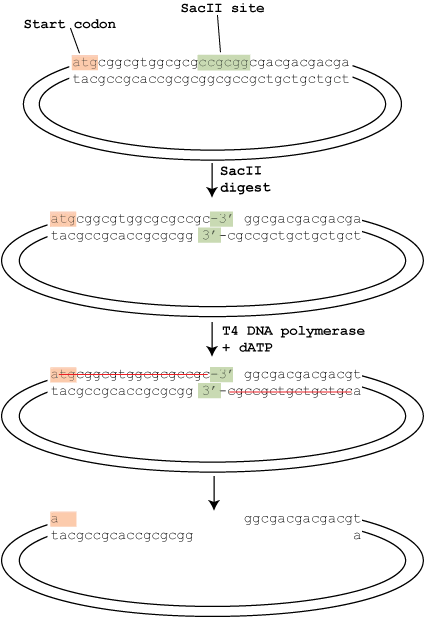You might think Northern Blots are an old-fashioned technique. After all, it is more common these days to detect and quantify RNA with quantitative real time (qRT)-PCR than with Northern Blots. Northern Blots fell out of favor for two reasons: The perceived difficulty of working with RNA and because most people don’t like working with radioactivity. Yet, qRT-PCR is prone to false positives and negatives, and reviewers may require Northern Blot confirmation of your qRT-PCR results. So sometimes Northern Blots are a necessary evil. However, because of its unpopular nature finding someone that can teach you about how to do a good Northern Blot can be hard. Lucky for you, I wrote this article.
Northern Blots are named after their big brother: The Southern blot. Southern blots are a method of detecting DNA and named after the surname of their inventor Ed Southern. A typical Southern blot experiment goes as follows: 1) run a DNA gel, 2) transfer gel contents onto a membrane, 3) hybridize said membrane with radioactive DNA probe, 4) wash off unbound radioactive probe, and 5) detect radioactive probe.
Northern Blots are done the same way as Southern blots but RNA is detected instead of DNA. So when invented the RNA method was named “Northern blot” as an homage to the original nucleic acid detection method. And the naming tradition just continued with Western blots. Clever.
How to do a Northern Blot
Make Your RNA
I think that Northern blots got a bad rap from the days when working with RNA was as hard as it got in molecular biology. This really isn’t the case anymore. There are numerous RNA isolation kits on the market now, and lots of RNAse inhibitors available. So don’t let the idea of working with RNA scare you. With basic precautions, such as cleaning the mold from your workbench and wearing gloves, isolating and maintaining the integrity of your RNA is easy.
Enjoying this article? Get hard-won lab wisdom like this delivered to your inbox 3x a week.

Join over 65,000 fellow researchers saving time, reducing stress, and seeing their experiments succeed. Unsubscribe anytime.
Next issue goes out tomorrow; don’t miss it.
Separate & Transfer Your RNA
Step 1: Gel.
To separate your RNA by size a simple TBE – polyacrylamide – urea gel works well. To learn more about how to do these gels, check out the video on Denaturing Urea Polyacrylamide Gel Electrophoresis by Summer et al.
Step 2: Transfer & Link.
After successfully separating your RNA it is now time to transfer your RNA to a nitrocellulose or nylon membrane, and crosslink it there to prevent your RNA from washing away in subsequent steps. To do this you need to expose your membrane to UV light and you will have to calibrate your UV lamp – cross linker machines usually have default programs, just like microwaves. You can also bake your nitrocellulose membranes in an oven, 30 minutes to 2 hours at 80°C, to fix your RNA in place.
Step 3: Stain.
After you have crosslinked, it is safe to stain the membrane with methylene blue. The position of rRNA blobs, as revealed by the methylene blue, will then give you benchmark for estimation where your mRNA should be. You can also use RNA markers, but these are usually not worth the bother as they degrade quickly and run strangely. Instead you can estimate where your mRNA should be relative to the dyes in the gel and to the ribosomal RNAs you will see after staining.
Pro tip: For your first experiment, it’s worth transferring your whole gel to the membrane and hybridizing the full length membrane in case your RNA runs differently than your estimate.
Make Your RNA Probes
Making the probes for your Northern blot is easy as well. And can be done one of two ways: 1) You can label a DNA oligo that is complementary to your RNA or 2) You can random label a PCR product homologous to your sequence. When provided by a manufacturer pre-labelled short oligos can be randomly incorporated across the length of your probe during a PCR reaction. You can then use a column, which is based on the same principle as the column for PCR cleanup, to separate your labelled, reusable probe from the free nucleotides.
For either of these methods you have a choice of labels. You can stay true to tradition and use a radioactive label, or you can also use non-radioactive, fluorescently labelled nucleotides. The benefit of using radioactive labels are that they are less sensitive to the reaction conditions and detection, but working with radioactivity is not without its risks and paperwork! This makes fluorescent labels more appealing but they do have a reputation of more miss than hit, because they are complicated organic molecules, unlike basic radioactive atoms.
Hybridize Your RNA
The hybridization steps in Nothern Blot follow the same route as for Sothern Blot. You pre-hybridize your membrane in the same buffer your probe is in, usually sodium citrate buffer (SSC), then add the buffer with probe and incubate. And I recommend that you do not faff about with making Denhardt’s solution (which you can buy) for your hybridization buffer. Making and hybridizing in Church buffer (2) is simple and in my experience works just as well. After hybridization you will then wash the membrane with a high salt SSC buffer several times to get rid of the unbound probe.
Detect Your RNA
You have a number of options to detect your bound radioactive probes, starting with X-ray film (a retro finish to a retro method!) and ending with digital imaging system.
In summary, these days Northern Blot is not as difficult as it used to be. But as with any method, don’t get discouraged if it doesn’t work the first time. Just plow on and think of the molecular biology bragging rights. No one will question your molecular biology cred if you can perform a Southern, Northern and Western blots.
Sources:
1. Bustin S. A. et al. The MIQE Guidelines: Minimum Information for Publication of Quantitative Real-Time PCR Experiments Clinical Chemistry (2009), 81(55), 611– 622
- Church G and Gilbert W. Genomic sequencing. PNAS (1984), 81, 1991– 1995
You made it to the end—nice work! If you’re the kind of scientist who likes figuring things out without wasting half a day on trial and error, you’ll love our newsletter. Get 3 quick reads a week, packed with hard-won lab wisdom. Join FREE here.







